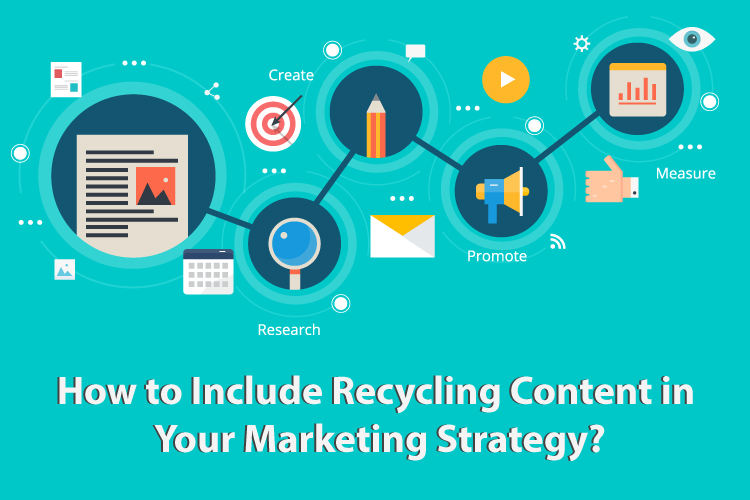3 Tips to Include Recycling Content in Your Marketing Strategy

Do you love some movies so hard that you can watch them again and again without getting annoyed or bored? Most people love to see things over and over again, which they liked, be it their favorite TV series or movies. This happens because some pieces of content are impressive and designed so well that people love to watch them often.
But, you might think about why we are talking about this all here? We did so to explain how content can sometimes be so effective that it can be reused over time. You can learn a very important lesson from, and that is recycling your content and including it in your online marketing strategy.
You spent hours and thousands of dollars in creating a solid piece of content for your marketing platforms, but are you really making the most use of it? Just posting your content once on a single platform doesn’t worth the time, efforts, and money you invest in creating it. According to a survey, most online marketers use their content only for once, and after they publish it somewhere, they never reuse it.
Whenever you design content for your business, make sure to focus on how to create the content in such a way that you can use it multiple times. When you do this at the time of creating content, it gets even better as you will design it in a way to use it on multiple online platforms and for various times.
In case your website is stuffed with a plethora of high-quality content, then why not recycle it again and again. These days your content does not only depend on your traditional website, but there are dozens of various platforms where you can reintroduce it. It includes social media channels, image sharing sites, video sharing sites, or in the form of a podcast.
You can actually convert your plain text articles into podcasts, video lectures, infographics, and PPTs. This article will help you how to recycle your epic content via these three tips to boost your content marketing.
1. Designing Reliable Content for Your Target Audience to Build Loyalty and Trust
Your content should always highlight a relevant message to your audience, and it should be beneficial for them. Your content must display your brand and should be easily consumable. Ask yourself, do my content solves customer issues, queries, and concerns, or it just works as a source of leisure for them? If your content is interesting but does not resolves the doubts and problems of your consumers, then your hard work is almost futile.
2. Create a List of High Performing Content via Analytics
When you analyze how your content is performing among your audience, it provides you excellent opportunity to create a list of highly engaging content. When you get to know that these contents are performing best for your audience, you can plan a strategy for reusing it effectively among various platforms. When your specific content is performing exceptionally amazing, you can even plan to promote it via an advertisement on various social media channels. When you do this, your content can produce a lot of customer engagement, and your brand will automatically become more popular among your competitors.
To learn which content should be recycled, you can use these tools to study how your customers reacting to it:
- Google Analytics: Indeed, the best tool to learn your customer behavior to your content. You can learn how many people view, stayed, and even completely consumed your content.
- Google Webmaster: Check which content indexed and which not. It also lets you know the CTR of your search content. If one specific article is getting millions of impressions, but very few people clicking it, it means customers are not interested in it at all.
- Facebook Business Page Insights: Help you to see reach, likes, and engagement.
3. Optimizing Every Stage of Your Workflow
Brands should study every single aspect of their current workflow to see the whole picture and where they currently stand. Brands that only focus on one aspect of their business strategy often experience failure. In content marketing, it means analyzing every piece of your content. Think of what platforms you post your content and in what forms you create and share them. Sum up every content you have created till now and then think about how to re-utilize it. Can you split your impressive articles into tweets or infographics and more?
